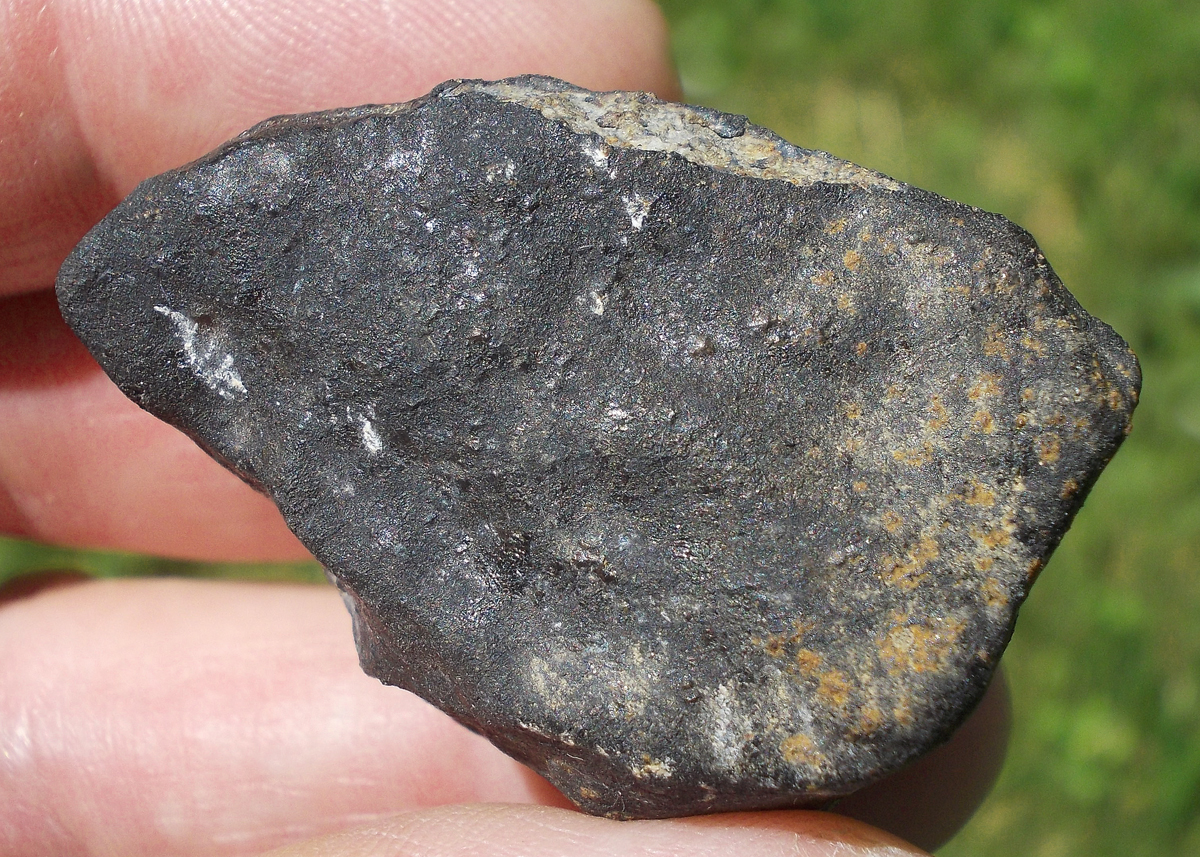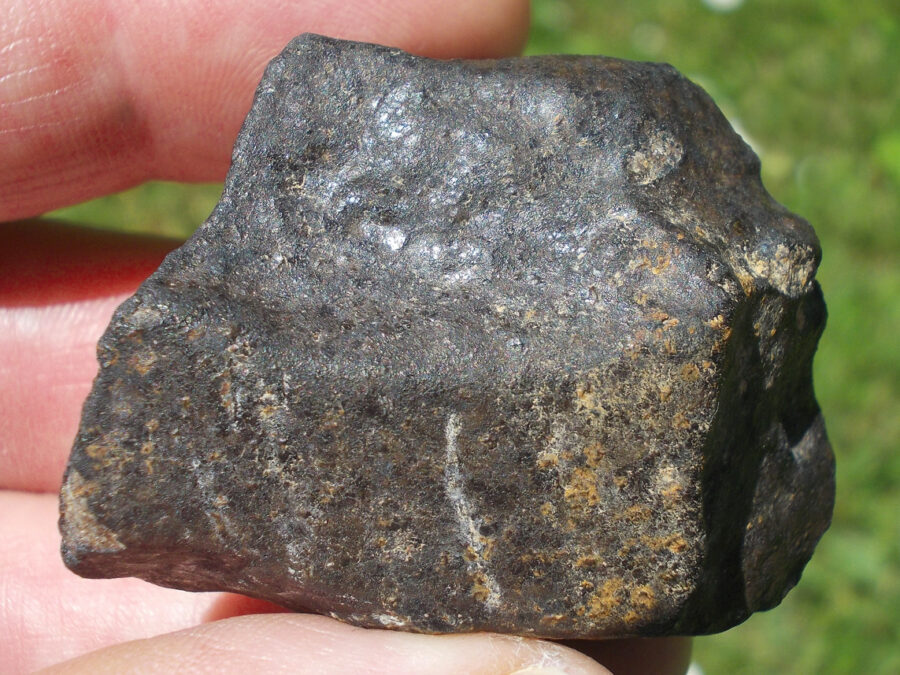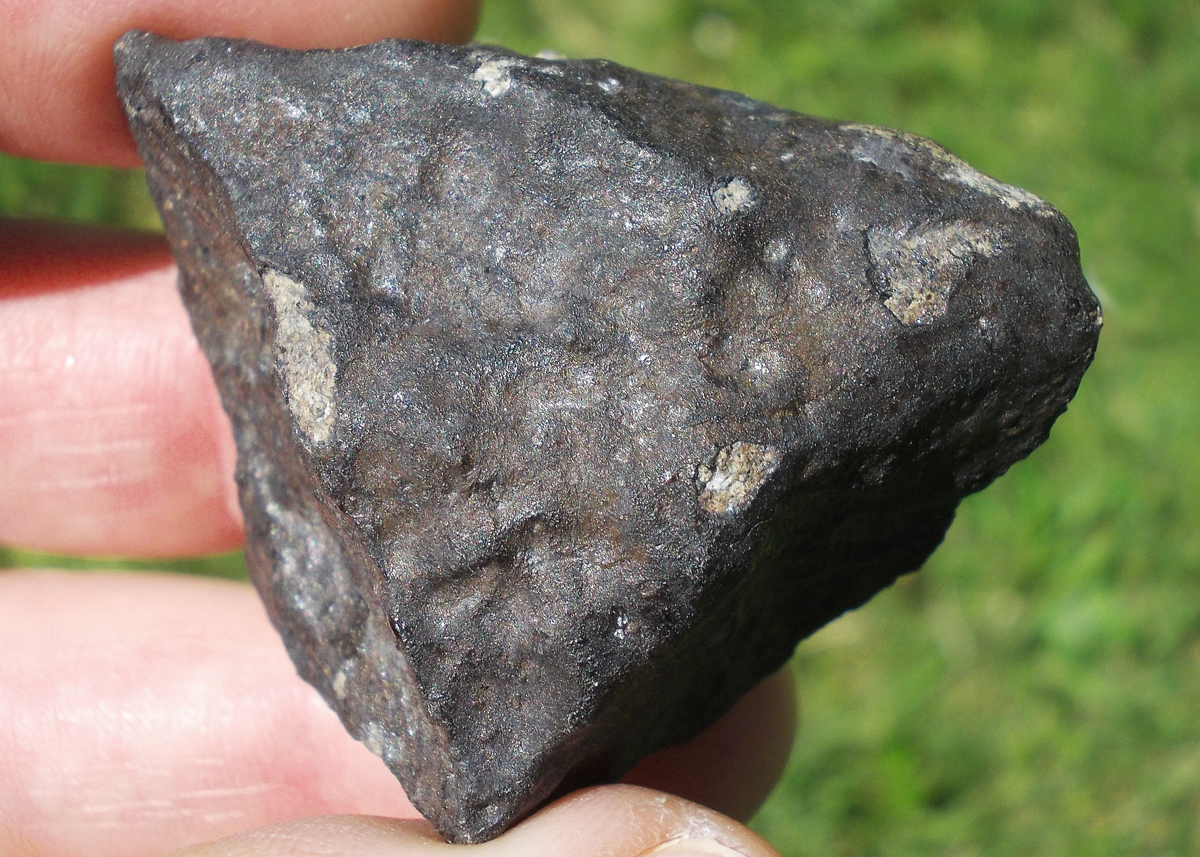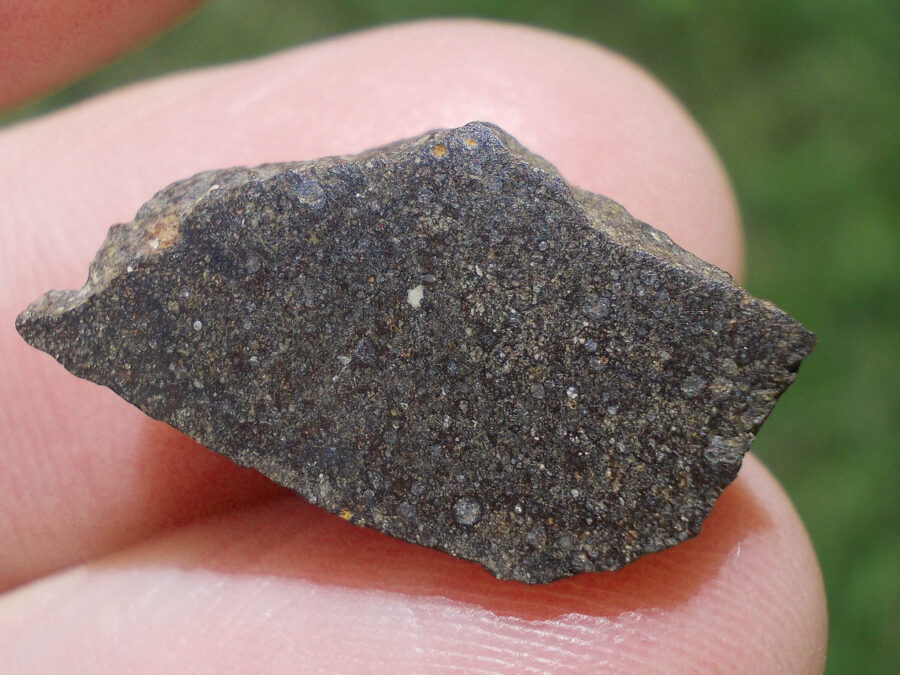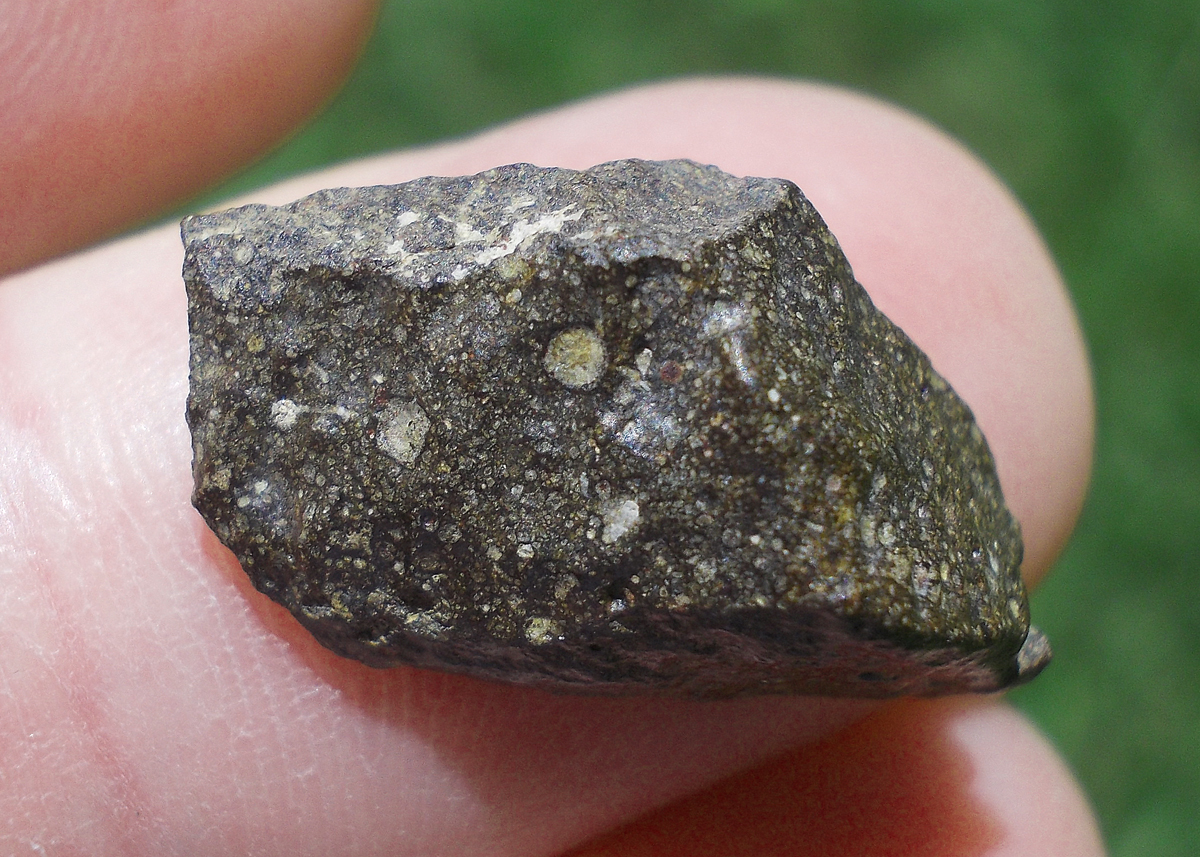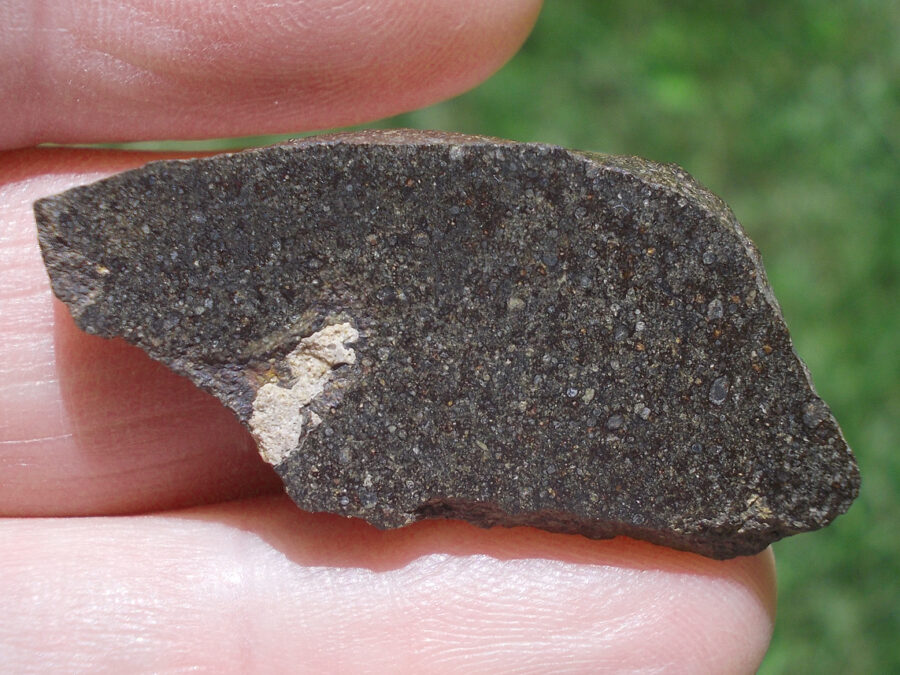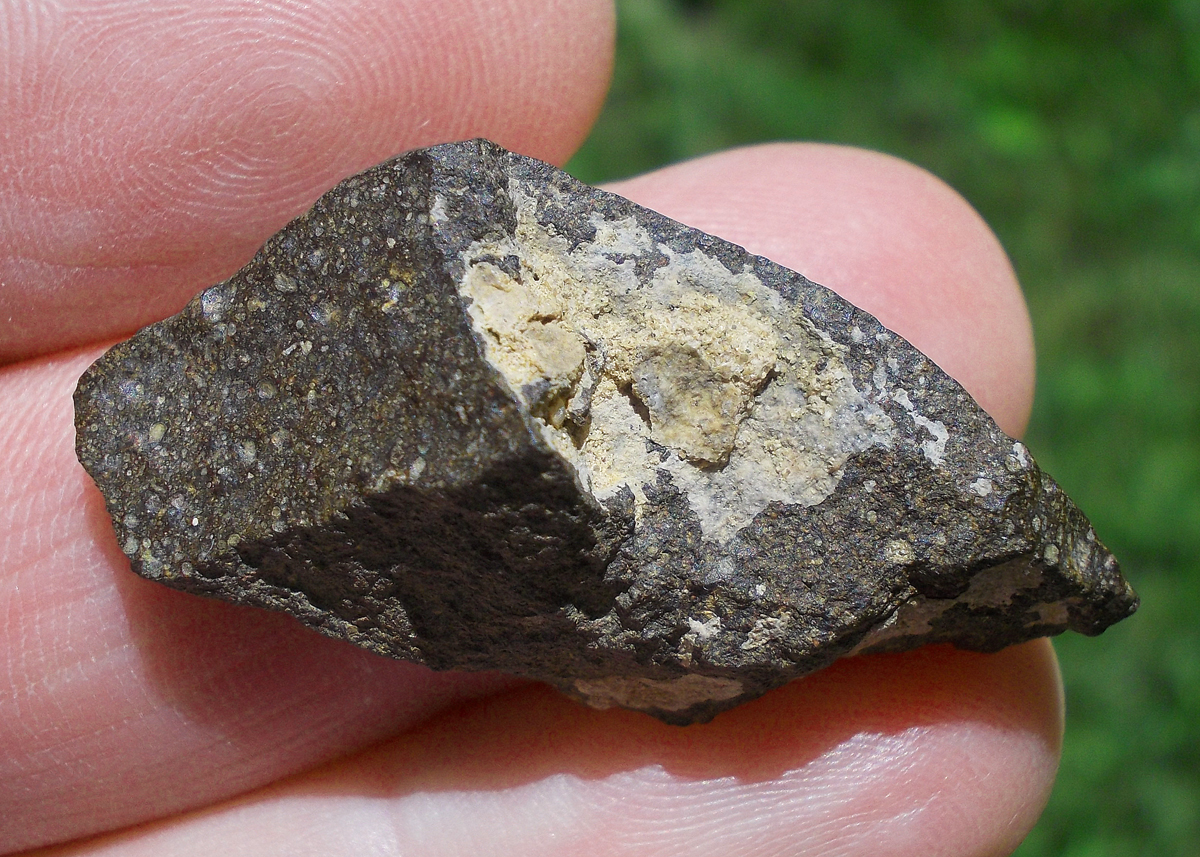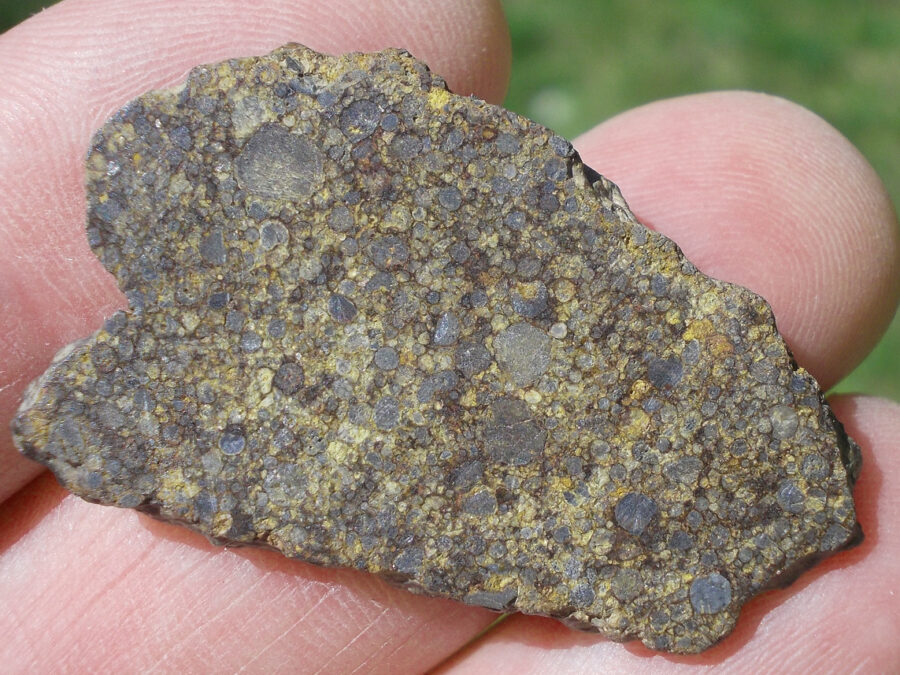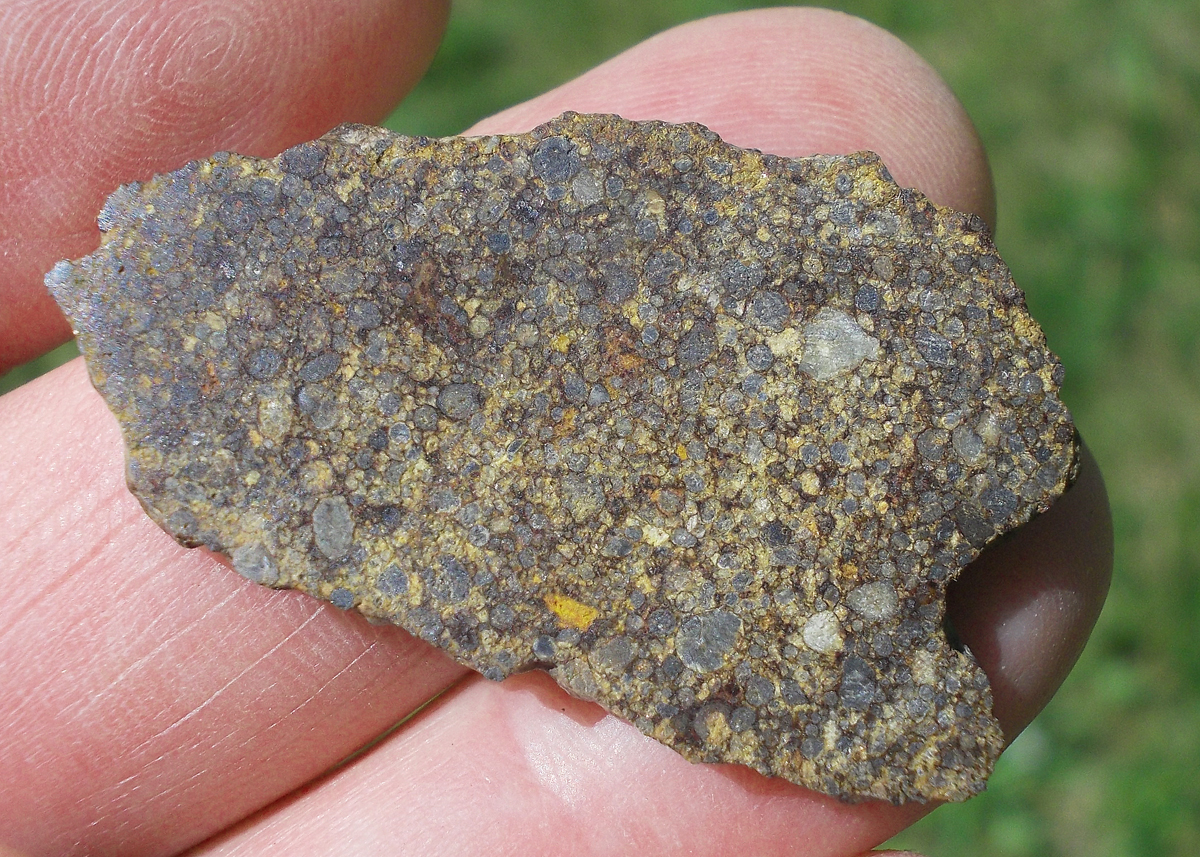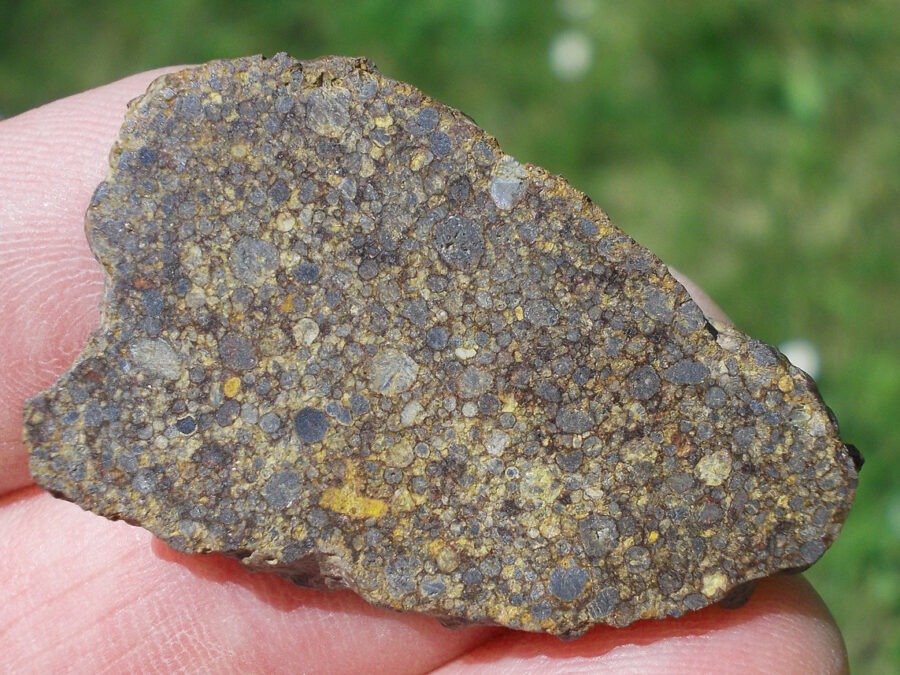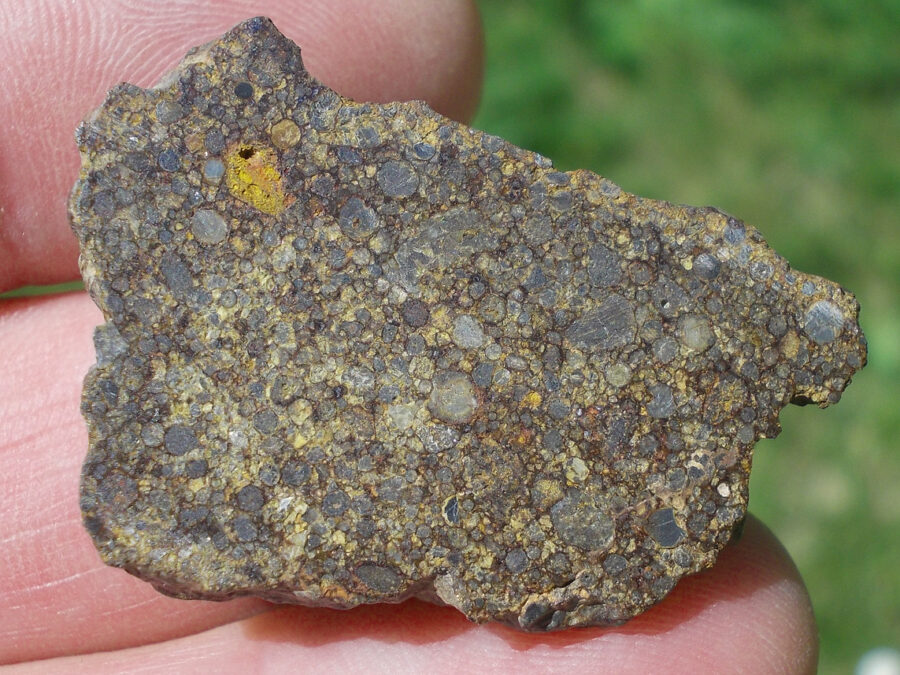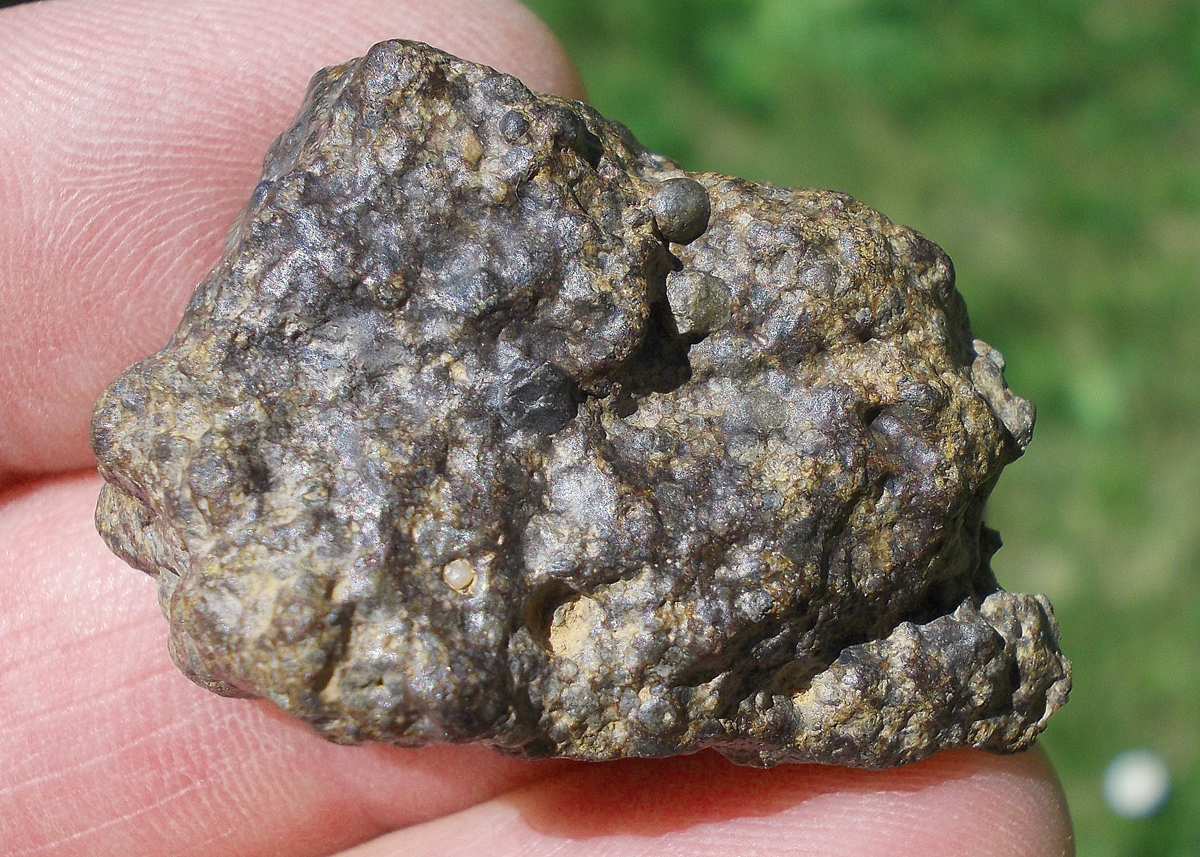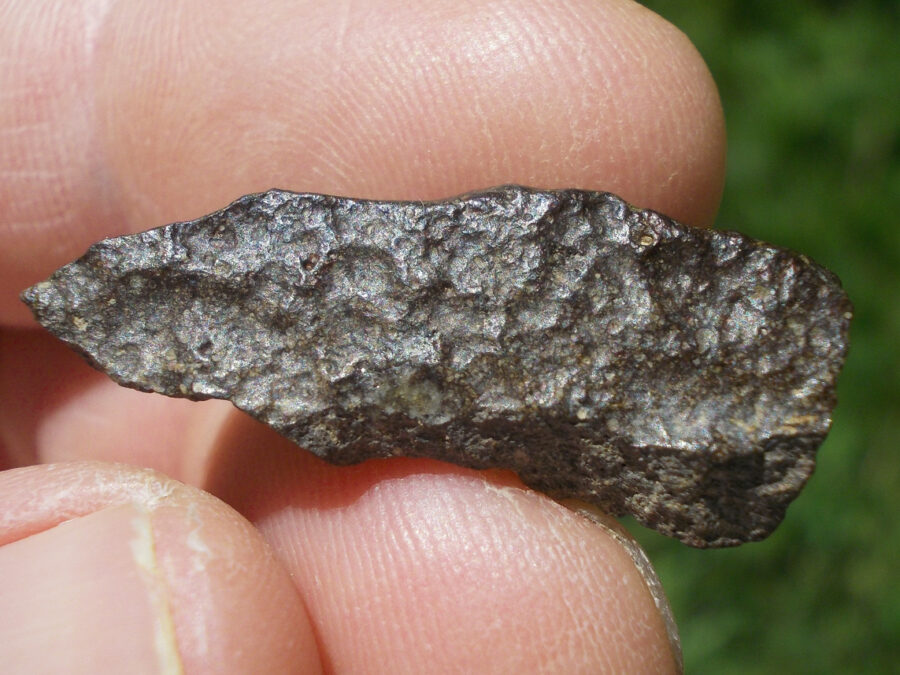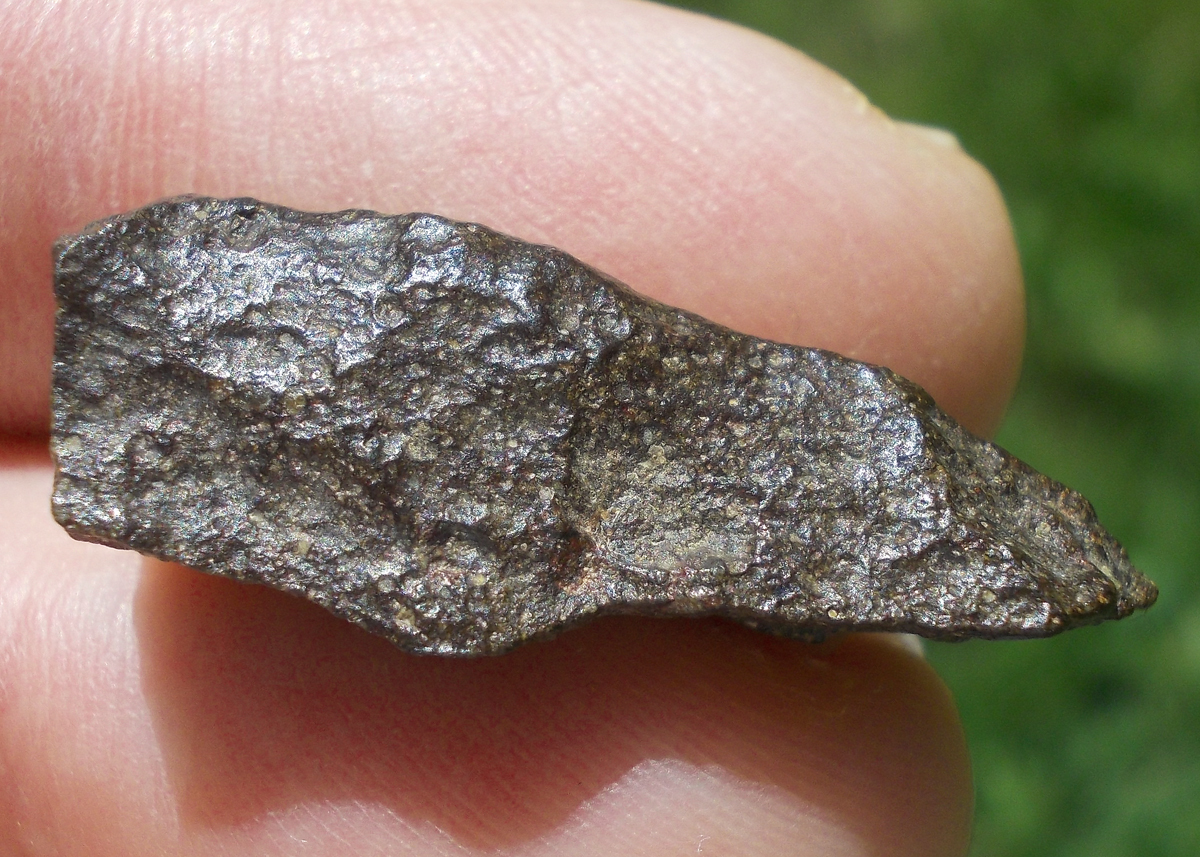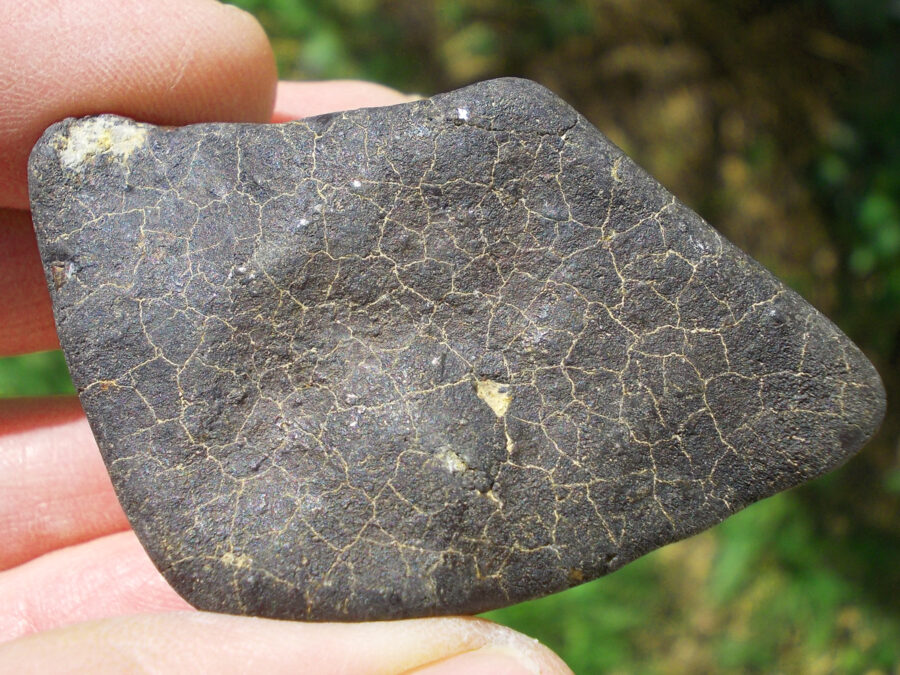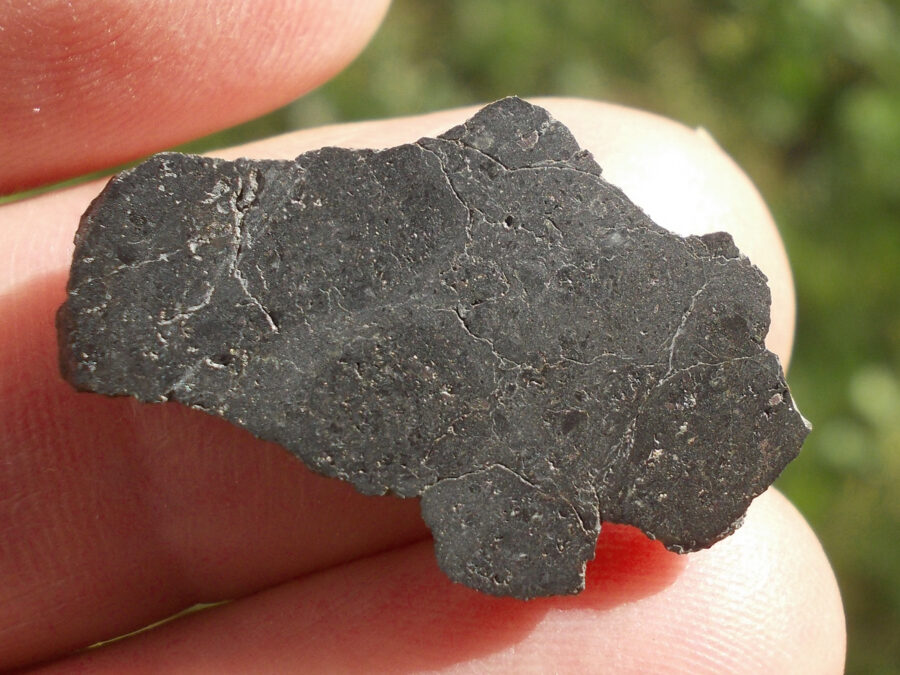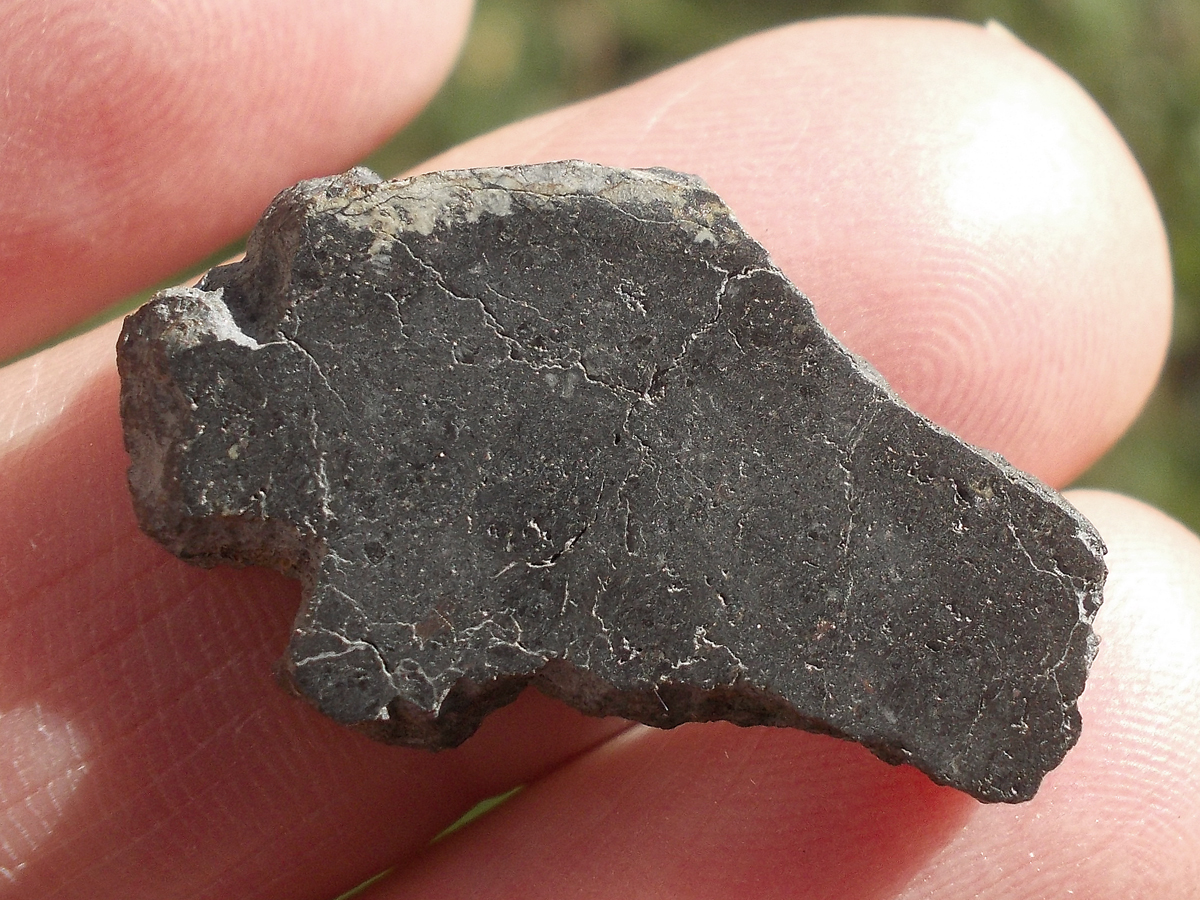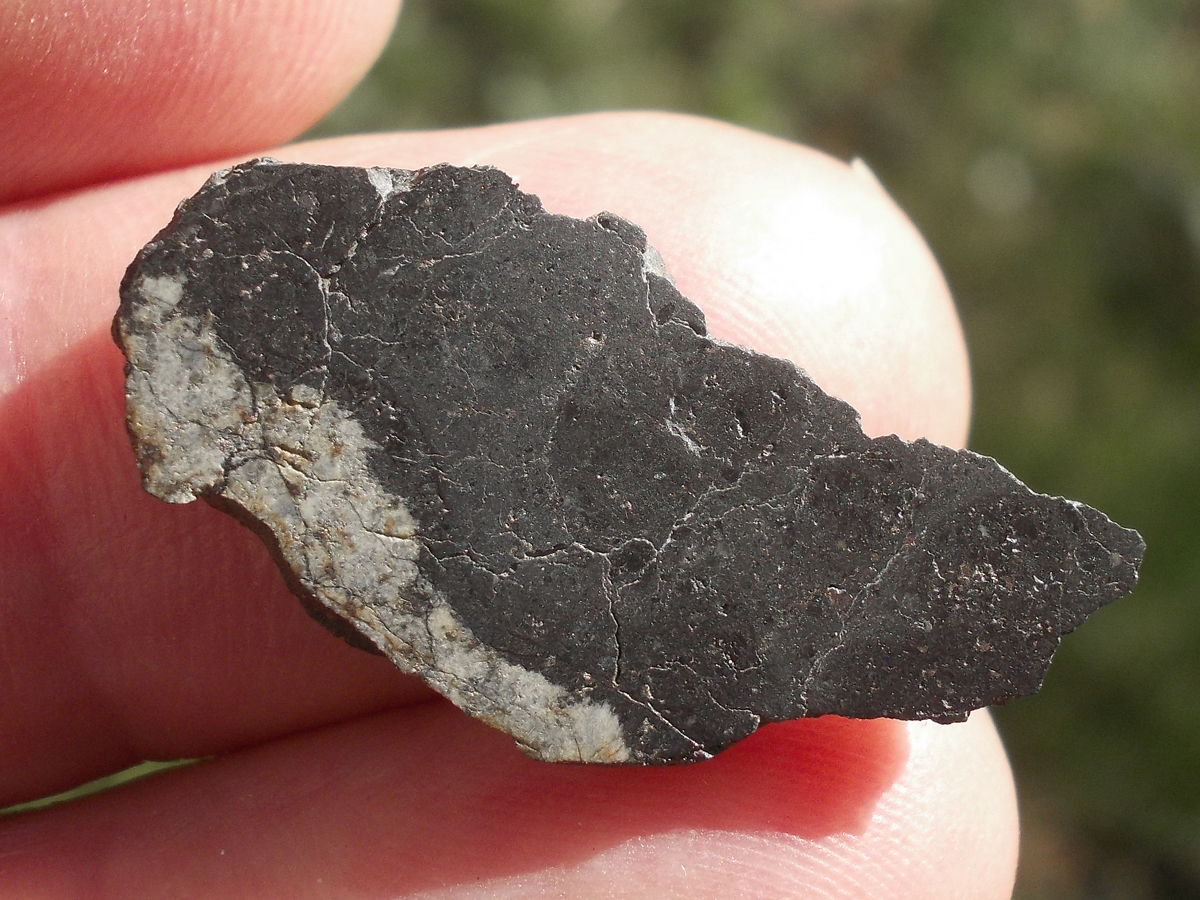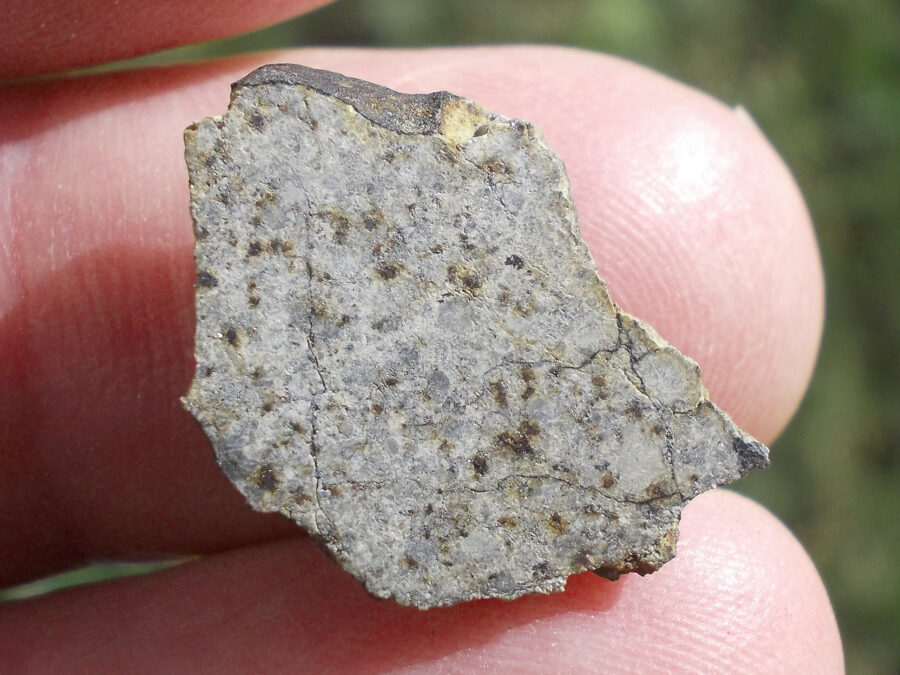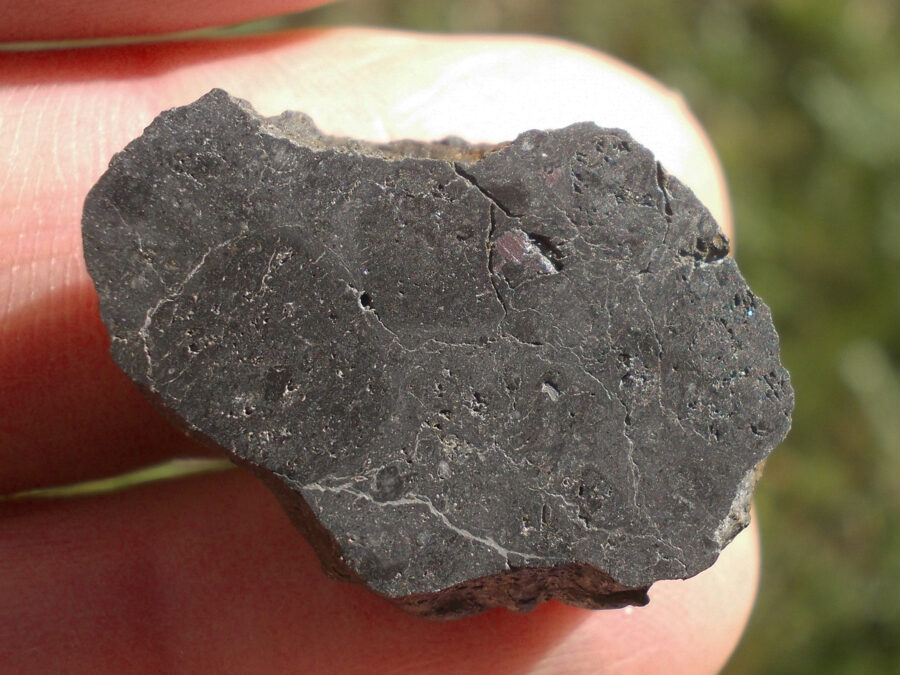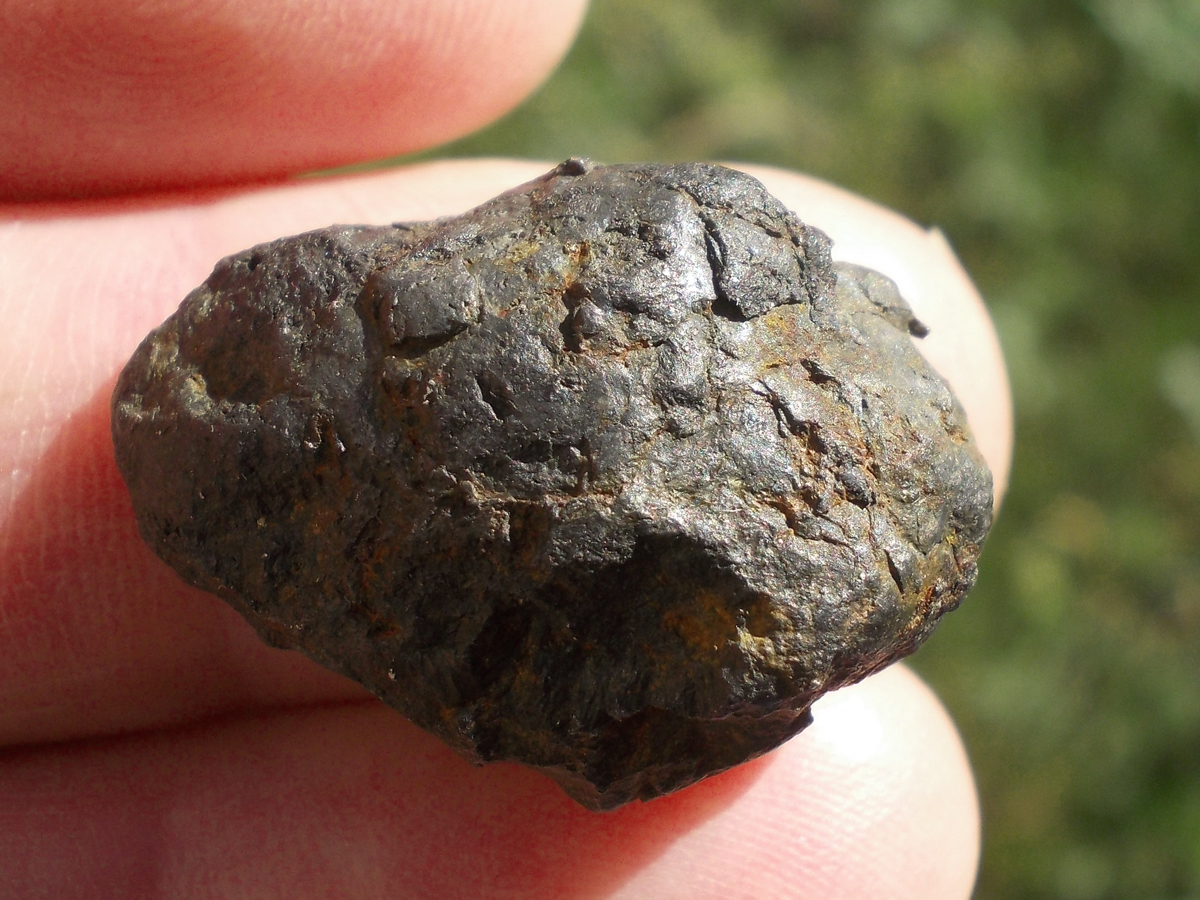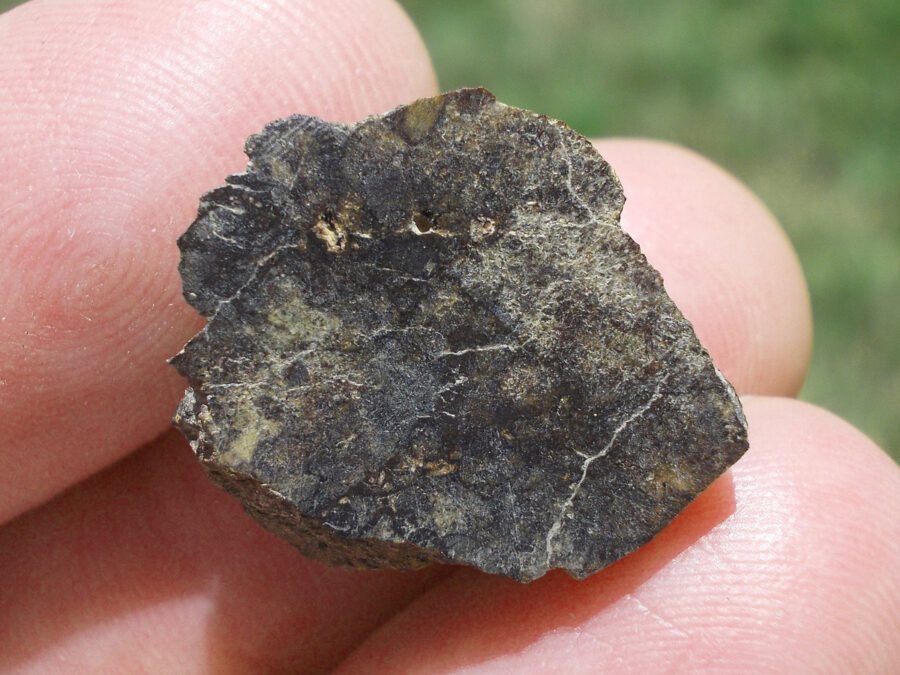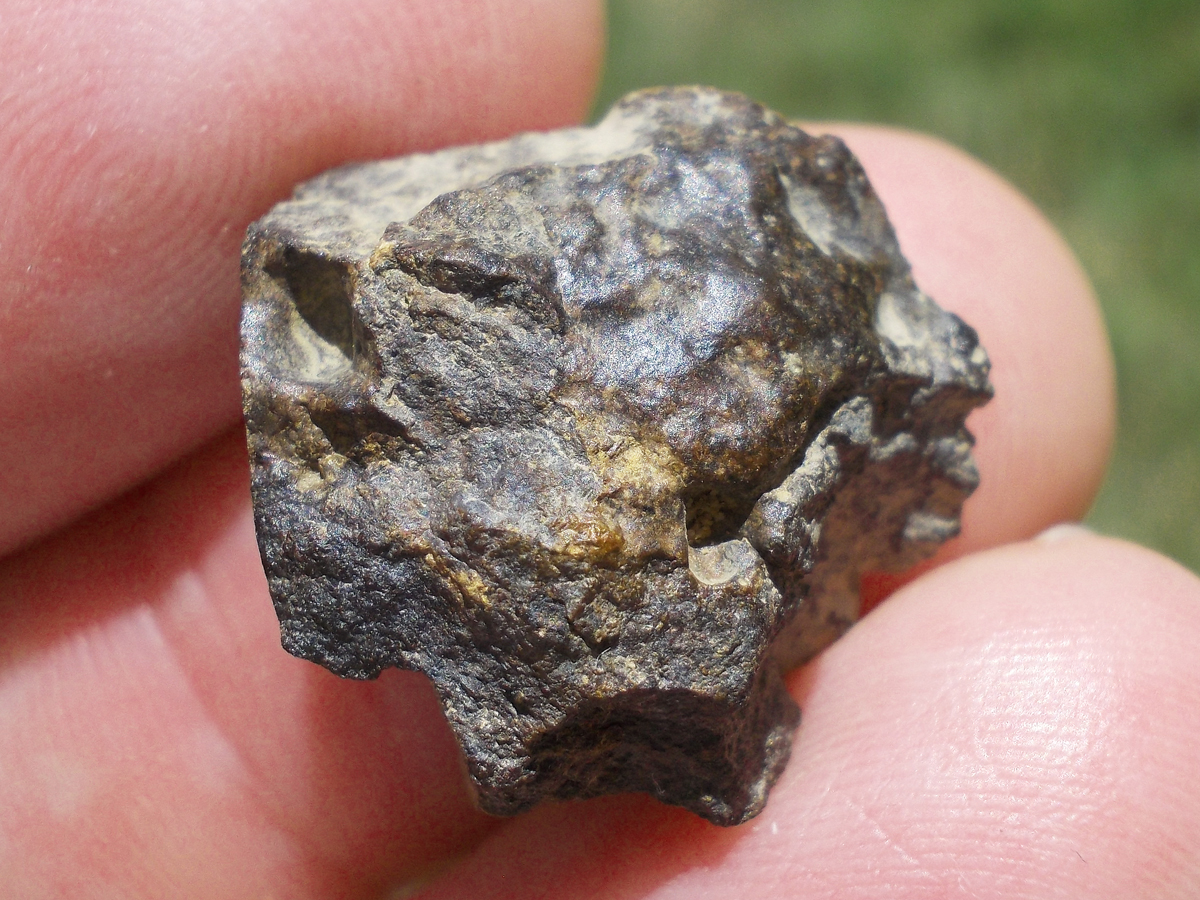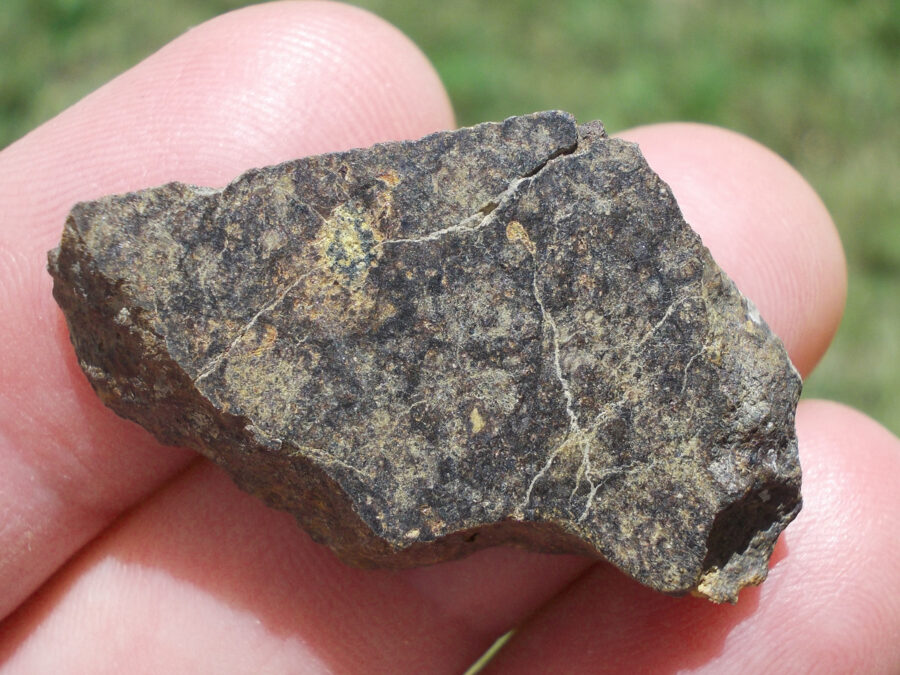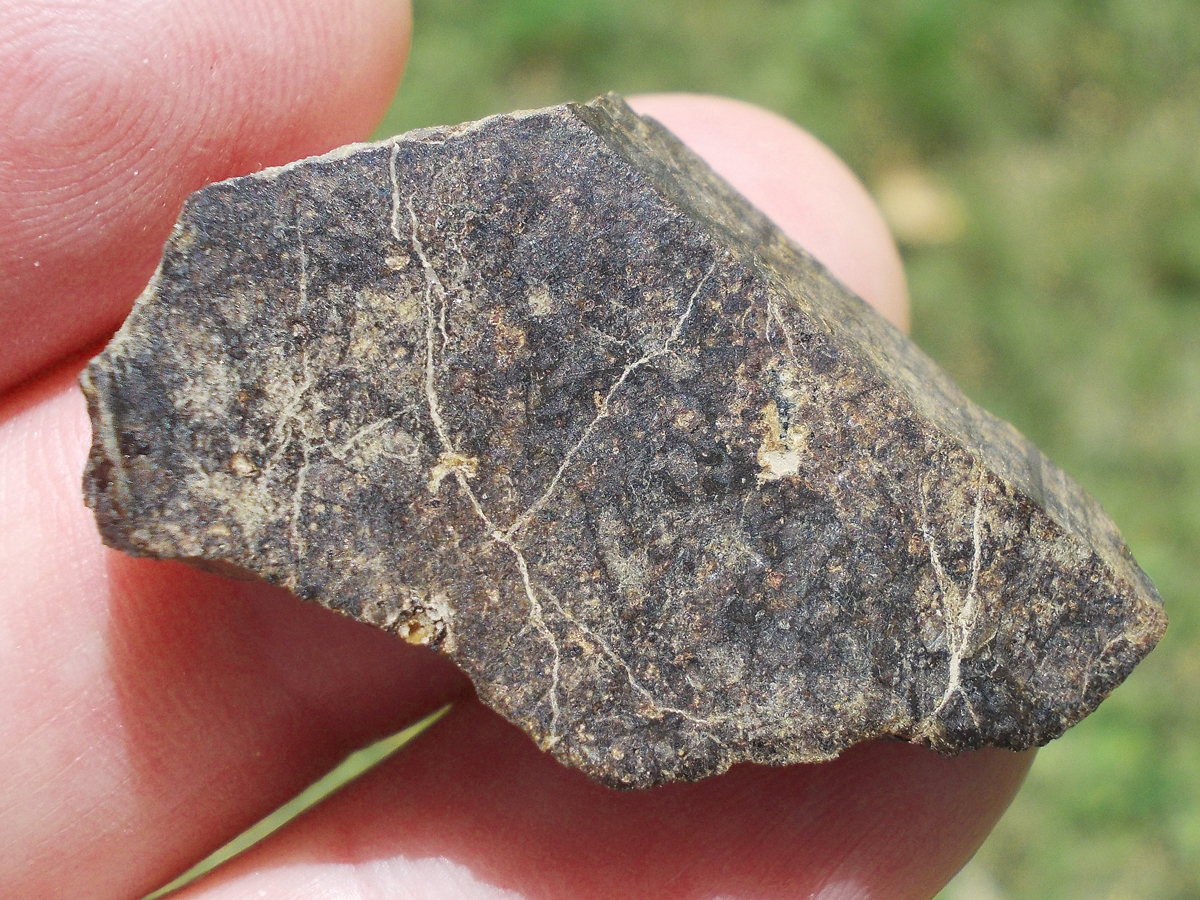Oued El Kechbi #41 L4 – 61,7 g
1.222,72 $Oued El Kechbi is a chondrite L4 meteorite that fell in Morocco near the town of Akhfennir on March 3, 2023.
On March 3, 2023 at 14:00 GMT, nomadic sheep herders named Derija Bent Yahya, Abo bakr Aabidha, Brika weld Himdah and Elkhadir observed a fireball moving with a SE to NW trajectory falling in the desert region ~45km southwest of Akhfennir, Morocco.
When the meteor entered the atmosphere, the fireball was a yellowish-white color, accompanied by a sonic boom that scattered the rancher’s herd.
The meteorites discovered lie in a valley that contains desert cobbles separated by an abundance of small seasonal ponds.
The first samples were found in the mud, where the surface was wet with recent snow.
As the seasonal ponds dried, more samples were found.
The Moroccan Association of Meteorite Hunters recovered 20 samples with a total weight of 1942g. Further other discoveries have been made, bringing the total known weight to ~4764g. Coordinates and weight of discoveries indicate that the distribution ellipse is 4.3 km long, and confirm the SE to NW trajectory.
43 stones weighing 1036g were sold to Jean Redelsperger.









